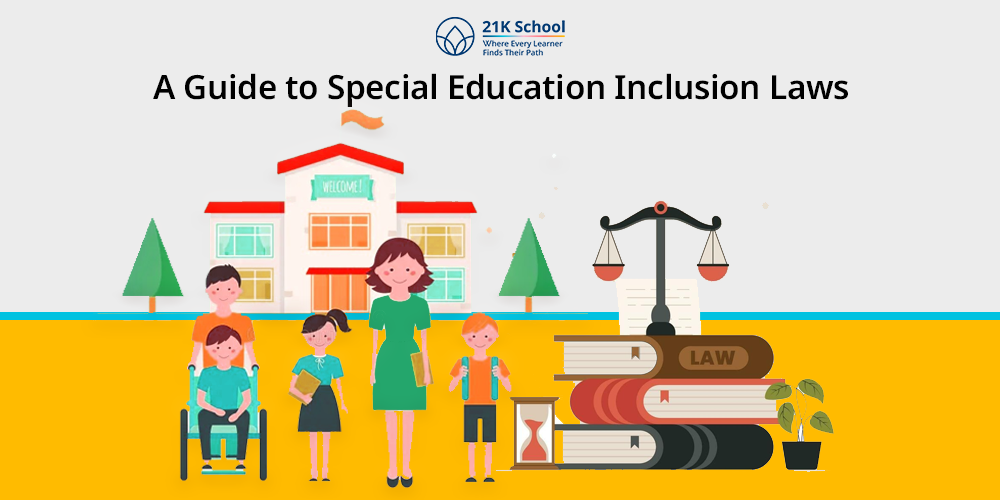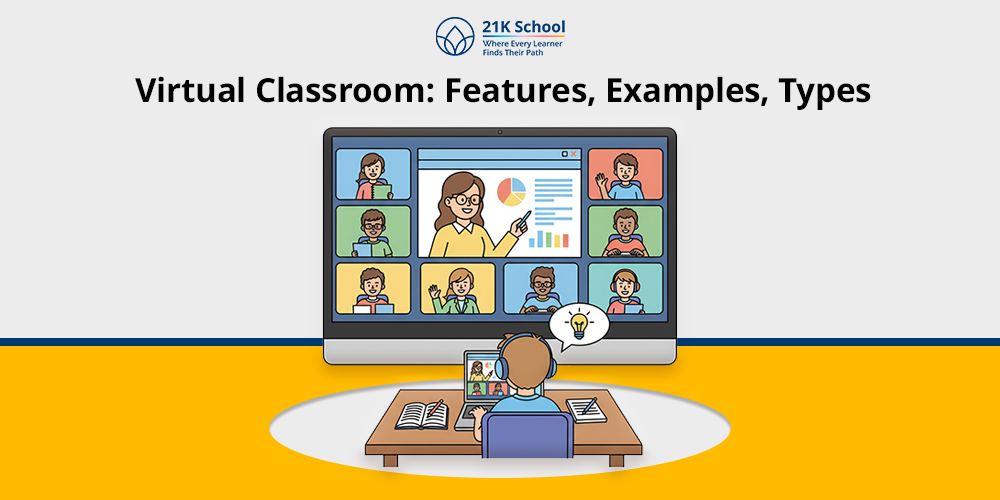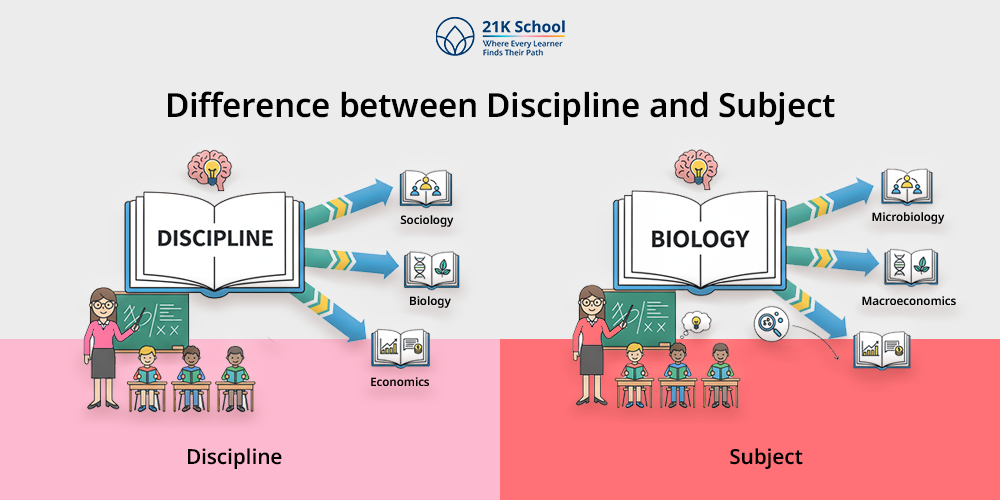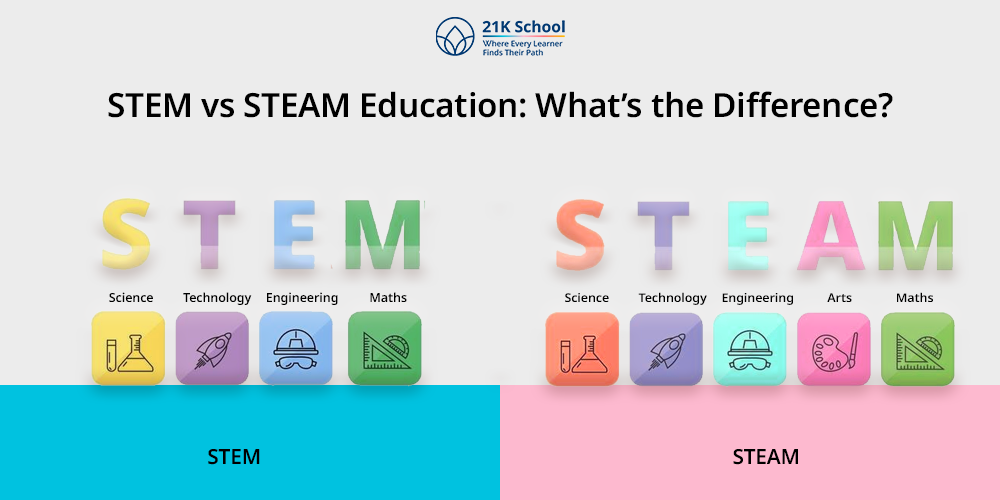
Have you ever thought about what it really means for a school to be “inclusive”?
Or why is it so crucial for children with disabilities to learn alongside their classmates in regular classrooms? Nowadays, individuals are giving more importance to inclusive education than ever.
Inclusive education is not about placing students with special needs in mainstream schools. It’s all about creating a good environment.
Inclusive education is where every child feels seen, supported, and empowered to reach their full potential.
Special education inclusion laws ensure that no child is left behind simply because they learn or communicate differently.
But have you wondered how these laws actually work? What do they look like in different parts of the world? And how are they uplifting classrooms in India?
Let’s talk about everything you should know from the global frameworks that first championed inclusion, to India’s evolving legal landscape for students with disabilities.
Contents
- 1 What Is Inclusion in Special Education?
- 2 Why are Special Education Inclusion Laws Important?
- 3 Global Inclusion Laws for Special Education
- 4 Special Education Inclusion Laws in India
- 5 Specific Provisions Promoting Inclusion
- 6 Other Supportive Legal Frameworks
- 7 Benefits of Inclusion in Special Education
- 8 Implementation Challenges of Special Education Inclusion Laws
- 9 Conclusion
What Is Inclusion in Special Education?
Inclusion in special education refers to educating students with disabilities in general education classrooms. With other students without disabilities, with appropriate support and services provided as needed.
This helps in creating a learning environment where everyone feels valued, respected, and has equivalent access to future educational opportunities.
Why are Special Education Inclusion Laws Important?
Special education inclusion laws will ensure that children with disabilities have the same education as other learners.
It fosters a more inclusive and equitable learning environment for them. Here’s a more detailed look at the importance of these laws:
1. Social and Academic Benefits
With the help of inclusive education learners get social and academic benefits such as necessary resources, technology access and facilitators support.
2. Fulfilling Fundamental Rights
Education is a fundamental human right and inclusion laws are an important part of it. This right is extended to all children.
With the help of right inclusive education these laws help in society upliftment.
3. Promoting Diversity and Acceptance
Special education inclusion laws offer a legal framework for ensuring that schools are held accountable for providing inclusive education.
Global Inclusion Laws for Special Education
Global inclusion laws for special education are the most ideal way in which students with disabilities have gained significant momentum, driven by international agreements and national legislation.
Let’s elaborate each to understand in depth:
1. Individuals with Disabilities Education Act (IDEA)
The Individuals with Disabilities Education Act (IDEA) is a US federal law ensuring students with disabilities receive a Free Appropriate Public Education (FAPE) in the Least Restrictive Environment (LRE).
People also know IDEA for its previous name The Education for All Handicapped Children Act from 1975 to 1990.
It allows public schools that receive federal funding to offer customized education programs that address the individual needs of students with disabilities.
2. Americans with Disabilities Act (ADA)
The Americans with Disabilities Act or ADA is a U.S. civil rights law that prohibits discrimination based on disability.
Here kids get equal opportunities especially students with disabilities in various areas. Areas like employment, public accommodations, transportation, and state and local government services.
3. UN Convention on the Rights of Persons with Disabilities (CRPD)
The UN Convention on the Rights of Persons with Disabilities (CRPD) is an international human rights treaty.
The treaty objective is to ensure students with disabilities can get all human rights and fundamental freedoms.
4. UNESCO Salamanca Statement (1994)
This influential statement emerged from the World Conference on Special Needs Education. UNESCO website
It promotes inclusive education as the most effective means of combating discrimination and improving the efficiency and cost-effectiveness of education systems.
5. Equality Act – UK
The Equality Act 2010 consolidates previous anti-discrimination laws in the UK.
It restricts discrimination based on disability in education and asks all the schools to make reasonable adjustments to ensure inclusion in the classroom.
6. Australia’s Disability Discrimination Act
A law that protects people with disabilities from discrimination in various areas of public life is known as Australia’s Disability Discrimination Act 1992 or DDA.
The objective is to promote equal opportunity and access for individuals with disabilities.
Special Education Inclusion Laws in India
In India, special education inclusion is primarily guided by DEPwD which includes the Rights of Persons with Disabilities (RPWD) Act, 2016 and the Right to Free and Compulsory Education (RTE) Act, 2009.
These laws provide disabled students a new opportunity to access regular school without any challenges.
Here’s a breakdown for each:
1. The Right to Education (RTE) Act, 2009
The Right to Education (RTE) Act of 2009 ensures that kids aged 6 to 14 get free and compulsory education in neighborhood schools.
It also mandates that private schools reserve 25% of seats for disadvantaged children. The act also focuses on qualified teachers, adequate infrastructure, and a supportive learning environment.
2. The Rights of Persons with Disabilities (RPwD) Act, 2016
The Rights of Persons with Disabilities (RPwD) Act, 2016, is a replacement of the Persons with Disabilities Act.
The objective of this act is to align India’s legal framework with the United Nations Convention on the Rights of Persons with Disabilities (UNCRPD).
3. National Education Policy (NEP) 2020
National Education Policy (NEP) 2020 envisions a fully inclusive education system.
It includes barrier-free access to education, use of assistive technology, teacher training in inclusive practices and equitable learning outcomes.
The objective of NEP 2020 is to create a more holistic, flexible, and relevant learning experience for each learner.
Specific Provisions Promoting Inclusion
Specific provisions promoting inclusion include various legal frameworks, educational policies, and practical strategies.
They aim to provide equal access and opportunities for everyone, regardless of their background or abilities.
These provisions look into different types of discrimination and strive to create environments in which all learners can take part with joy and comfort.
Let’s explore some popular provisions promoting inclusion:
1. Inclusive Education
Inclusive education refers to each kid learning in the common classrooms within the same schools.
It offers effective learning opportunities for childrens who have traditionally been excluded. Not only children with disabilities but speakers of minority languages too.
2. Removal of Barriers
Specific provisions are ideal to upgrade inclusion focus on removing physical, systemic, and attitudinal barriers to provide equitable access and participation environment for all individuals.
By giving the right resources, tools, technology, facilitator guidance and study materials any kid can achieve success.
3. Reasonable Accommodations
In reasonable accommodations schools must provide adjustments to ensure equal access.
Examples include extra time in exams, braille books and sign language interpreters and flexible attendance policies.
This aims to remove barriers and promote inclusion, ensuring equal opportunities for everyone.
4. Least Restrictive Environment (LRE)
Least Restrictive Environment (LRE) in special education prioritizes inclusion and access to the general education curriculum while providing necessary support.
With LRE kids with disabilities learn alongside their peers to the maximum extent possible.
5. Anti-discrimination
Anti-discrimination refers to the policies and laws that aim to prevent unfair treatment with people, especially students with disabilities.
Implementing specific measures to ensure equal opportunities and prevent unfair treatment based on various characteristics like race, gender, religion, or disability.
6. Monitoring and Accountability
Monitoring and Accountability is crucial for inclusive education policies and practices.
Its main focus should be on tracking progress, identifying areas for improvement, and holding stakeholders accountable for creating inclusive learning environments.
Some specific provisions promoting inclusion should include clear objectives, standardized indicators, robust data management, and a commitment to iterative learning and ethical considerations.
Other Supportive Legal Frameworks
Other supportive legal frameworks are crucial for development in various sectors, informal economies, and public finance systems etc.
These frameworks create clear rules, entitlements, and mechanisms for access to resources, protection of rights.
Here’s a breakdown of how different legal frameworks support various aspects:
1. National Trust Act, 1999
An Indian law that established a statutory body called The National Trust for the welfare of persons with Autism, Cerebral Palsy, Mental Retardation, and Multiple Disabilities is known as National Trust Act, 1999.
The aim of the trust is to create an enabling environment and provide support systems for these individuals to live as independently as possible.
2. Sarva Shiksha Abhiyan (SSA)
Sarva Shiksha Abhiyan or SSA is one of the popular abhiyan of India which means “Education for All,”.
It is a comprehensive and integrated flagship program provided by the Indian government. The aim of this is to achieve universal elementary education for all children aged 6-14.
It was established in 2001-2002. And implemented in partnership with state and local governments with the objective that every child has access to quality education by 2010.
3. Samagra Shiksha Abhiyan
Samagra Shiksha Abhiyan means holistic education campaign for students. This scheme is for school education in India, extending from pre-primary to class 12.
The goal of this Abhiyan is to ensure universal access to quality education, promote equity and inclusion, and enhance learning outcomes for everyone.
Samagra Shiksha Abhiyan also supports the implementation of the Right of Children to Free and Compulsory Education or RTE Act of 2009.
4. CBSE and UGC Guidelines For Inclusive Education
CBSE and UGC guidelines for inclusive education showcases the need to provide equal educational opportunities for all students, including those with disabilities.
Their guidelines cover everything from infrastructure, teaching methodologies to support systems. This ensures that special needs students can also participate.
5. Sugamya Bharat Abhiyan
The Sugamya Bharat Abhiyan is popular as the Accessible India Campaign in India.
It is a nationwide initiative established by the Department of Empowerment of Persons with Disabilities or DEPwD.
It is designed to improve universal accessibility for students with disabilities. Its objective is creating a physical infrastructure, transportation, and information and communication systems accessible to every individual.
6. Scholarships for Disabled Students
The Government of India provides several scholarships and financial assistance programs for disabled students at all education levels.
Some common scholarships include pre-matric scholarship for students with disabilities, post matric scholarship for students with disabilities, scholarship for top class education for students with disability etc.
Benefits of Inclusion in Special Education
There are many benefits of inclusion in special education for everyone from disabled students to facilitators and school.
It fosters a sense of belonging, promotes social and emotional development, and enhances academic results of individuals.
Primary benefits for students with disabilities includes:
1. Benefits for Students with Disabilities:
i) Improved Academic Outcomes
To improve academic outcomes, inclusive settings are crucial for students with disabilities.
This helps in better achievement of IEP goals, increased access to the general curriculum, and enhanced skill acquisition and generalization.
ii) Enhanced Social Skills and Relationships
Enhancement of social skills and relationships with normal students is a main goal of these inclusion laws.
Special needs students can connect with others and develop stronger friendships, increased social initiations.
This offers wide opportunities for positive interactions both in the classroom and society.
iii) Increased Self-Esteem and Confidence
To increase self-esteem and confidence in disabled students, inclusion in special education is a must. It will boost their self-perception and motivation to learn and participate.
It is not about metal support, it is also about other supports such as technology, tools, study material etc.
iv) Increased Preparation for Future Environments
Working for the future is everyone’s right which cant be removed. Inclusion helps special needs students to develop the skills and confidence they need.
This guides them to navigate future academic and social settings without any obstacles or challenges.
2. Benefits for Students without Disabilities:
i) Increased Empathy and Understanding
Students without disabilities can also get the advantages to settle down in the real environment with different kinds of people.
Interacting with special needs students helps non-disabled kids to develop real empathy, sharing behavior and caring, compassion, and understanding of diverse learning needs.
ii) Stronger Social Skills and Friendships
Inclusive classrooms provide the environment which includes stronger social skills and friendships which is very much important.
Both disabled and non-disabled learners need to build positive relationships with a wider range of peers. By fostering social skills and friendships they can open up towards different people.
iii) Reduced Stigma and Negative Stereotypes
There are many people who are initially uncomfortable with spending time with special needs students. However, the inclusion helps them to reduce stigma and negative stereotypes.
It’s time to take the help of Inclusive environments to break down negative stereotypes. It also promotes a more positive way of looking at disabled people.
iv) Enhanced Academic Learning
Academic learning is essential for both disabled and non-disabled learners. However, classrooms play a crucial role here.
As per previous data rather than normal classrooms, inclusive classrooms can benefit all students.
Here facilitators adapt their teaching strategies to meet diverse learning needs of all types of learners.
v) Greater Appreciation for Diversity
Inclusion in special education fosters a greater appreciation for diversity by promoting acceptance, empathy, and understanding among all students.
The exposure enhances social-emotional skills, academic performance, and their well-being, while preparing them for a diverse world.
Implementation Challenges of Special Education Inclusion Laws
Other than legal frameworks there are several challenges of implementation of special education inclusion laws.
Challenges such as lack of awareness, insufficient infrastructure, shortage of trained professionals, negative attitudes, and inadequate funding etc. Here’s a elaboration:
Challenges:
i) Lack of Awareness
There are a lot of parents, facilitators and even some school administrators who lack the awareness of the legal provisions and the principles of inclusive education.
This leads to delay or no implementation of special education inclusion laws in that particular area or school. This happens especially in rural areas.
ii) Insufficient Infrastructure
Several schools often have insufficient Infrastructure such as ramps, accessible toilets, and assistive technology to support students with disabilities.
This can create challenges for special learners to participate in school or classroom workshops or continuous learning approaches.
iii) Shortage of Special Educators
Special Educators are a crucial part of special education. These educators motivate learners and provide the right environment for learning.
However, it is seen that there’s a significant gap in the availability of qualified special education professionals. This will lack individualized support and specialized instruction in the classroom.
iv) Negative Attitudes and Social Stigma
Negative attitudes and social stigma is one of the big challenges to implementing special education inclusion laws.
These societal problems lead to discrimination, and lack of understanding, leading to barriers in access to education, social isolation.
v) Inadequate Funding
Inclusive education needs financial investment is one of the obstacles to implementing special education inclusion laws.
Funding is crucial for special needs students to provide their necessities such as resources, including training for teachers, specialized materials, and assistive technology.
Addressing the Challenges of Implementation:
i) Raising Awareness
Lack of awareness can be resolved by conducting public awareness campaigns especially in schools.
Also by providing comprehensive training to facilitators and parents of both disabled and non-disabled students about inclusive education principles and practices can be beneficial.
ii) Investing in Infrastructure and Resources
Governments and schools need to invest in accessible infrastructure, assistive technology, and specialized educational materials.
This will not only help students with disabilities but also guide non-disabled kids how to cope up with this environment.
iii) Training and Supporting Facilitators
As we know special needs students require more efficient facilitators and to fulfill the lack one needs proper training and guidance.
By providing pre-service and in-service training for facilitators on inclusive teaching strategies, differentiated learning or instruction and behavior management is important.
iv) Promoting Positive Attitudes
Addressing negative attitudes and social stigma helps in Promoting Positive Attitudes in students, facilitators and parents.
With different kinds of awareness campaigns, positive role models, and inclusive school cultures can create a more positive environment for special needs students.
v) Ensuring Adequate Funding
Funding as a major problem can be resolved by the government and organization providing a corporate social responsibility funding facility.
Governments need to allocate sufficient funding to support inclusive education initiatives and ensure that schools have the resources they need.
Conclusion
Special education inclusion laws are the foundation of an education system in the 21st century. Individuals need to understand the importance of uplifting special needs students.
They uphold the rights of learners with disabilities to learn, grow, and thrive alongside their classmates. While progress has been made both globally as well as in India, challenges persist in implementation.
A collective effort is needed from governments, facilitators, parents, and society communities to improve an inclusive, barrier-free learning environment for everyone.
This can be done with the right policies, awareness, and commitment. Now you can build a world in which every child receives the education they deserve.
If you are looking forward to building the right environment for your kids’ learning, 21K School is providing the opportunity to enroll in an online platform which is ideal for KG to 12 students.
Visit our website to learn more about it.



